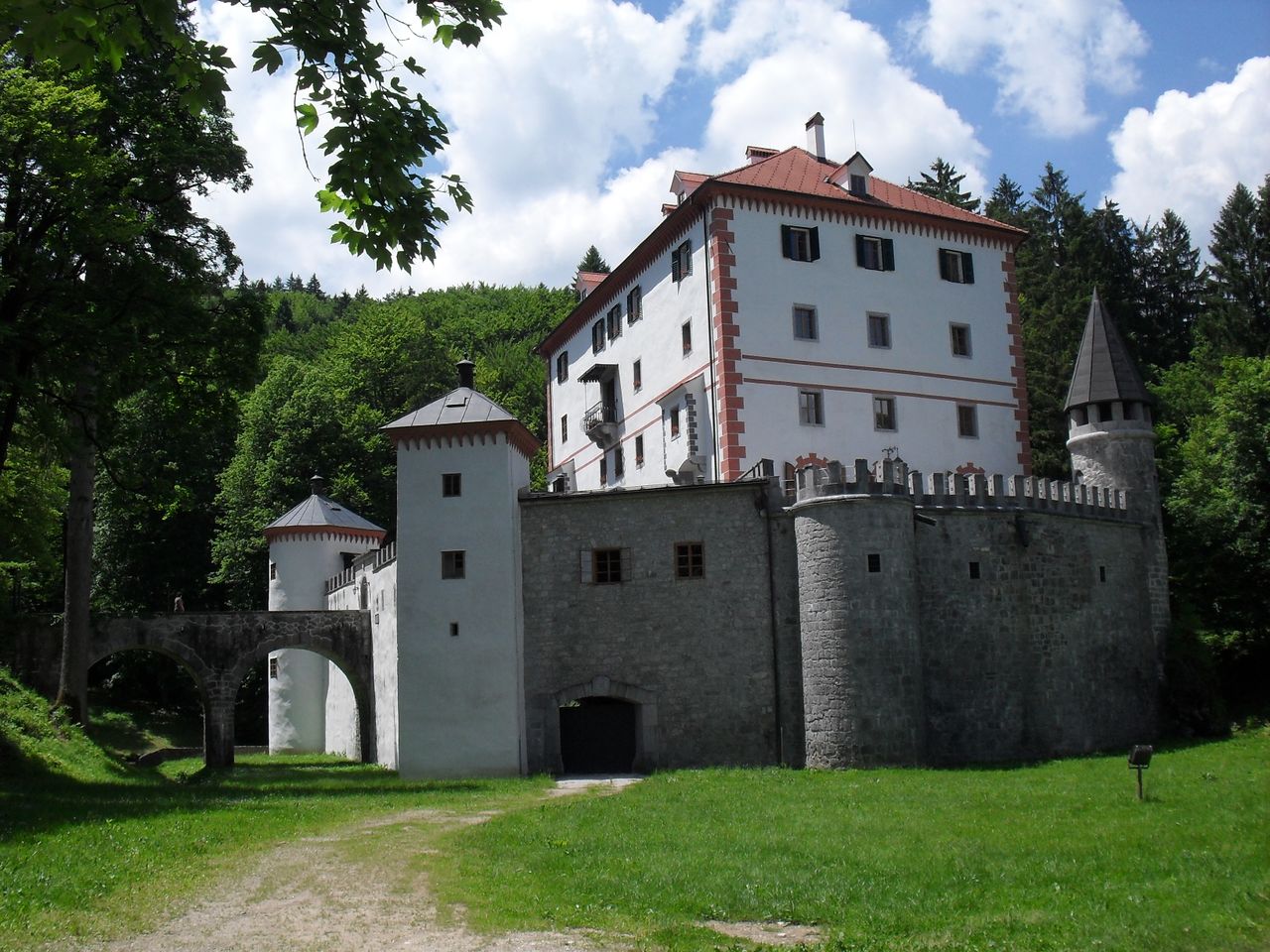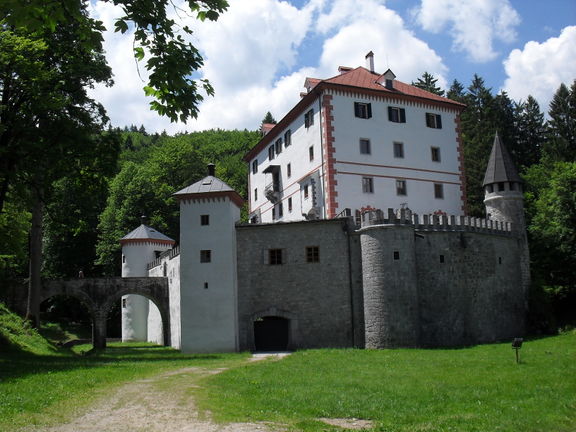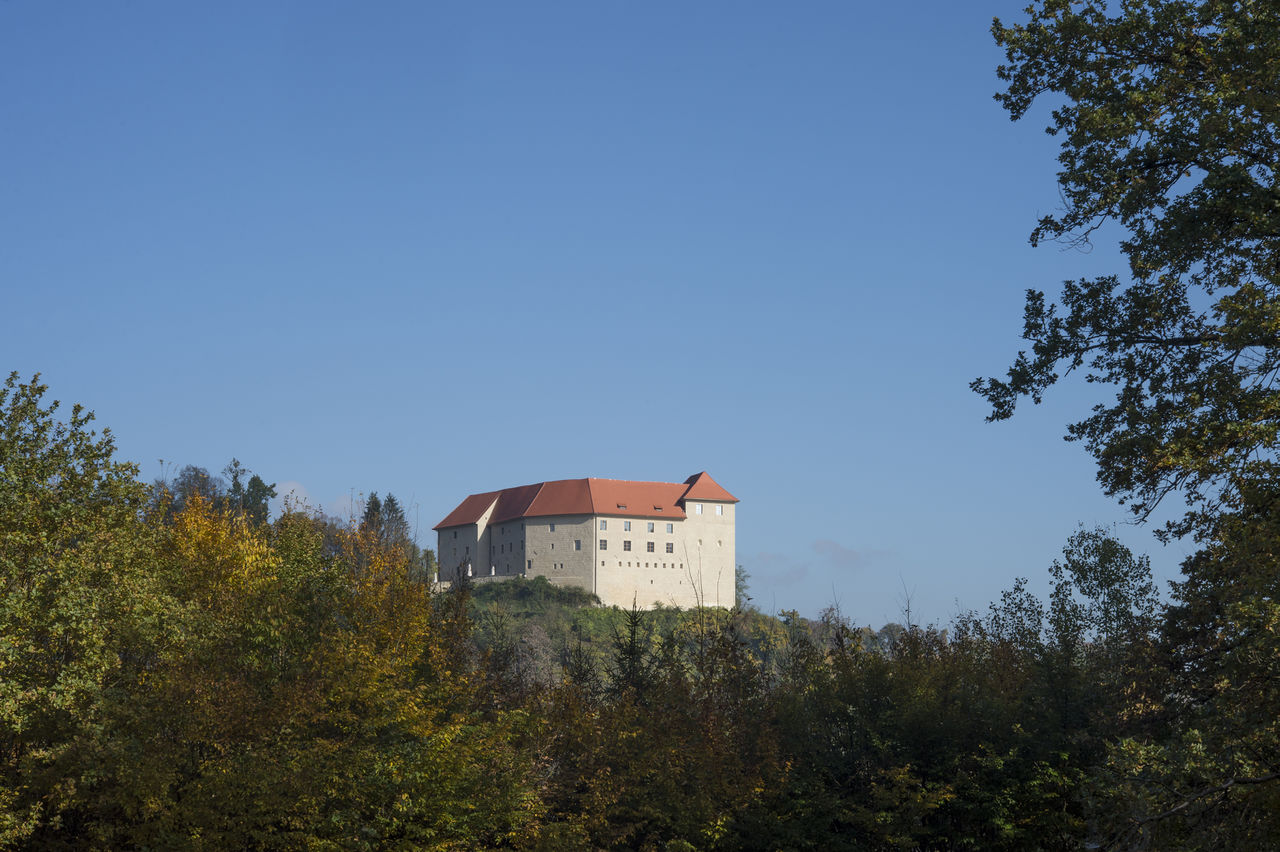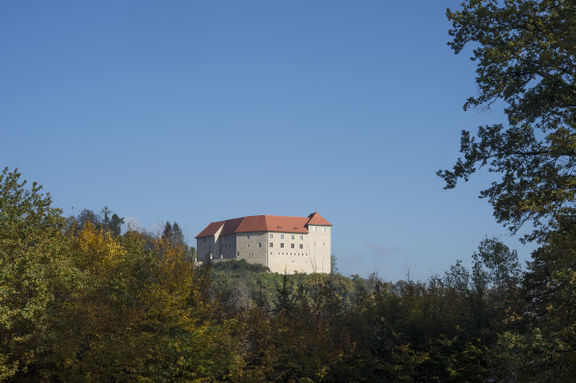 Snežnik Castle, being the only Slovene Castle with genuine furnished interiors, came under the administration of the National Museum of Slovenia after its restoration in 2008.
Snežnik Castle, being the only Slovene Castle with genuine furnished interiors, came under the administration of the National Museum of Slovenia after its restoration in 2008.
The earliest record of Snežnik Castle dates from 1269 when it was owned by the patriarchs of Aquileia. The castle lies on a strategic site, on the edge of the Lož Valley under the Snežnik mountains surrounded by a beautiful park and vast forests with diverse and rich flora and fauna including big game ranging from bears, boars, wolves and lynxes, to wild fowl and deer, and was always favourite hunting residence. Throughout the centuries the castle has changed owners many times, but in 1853 the castle and associated forests of Snežnik were bought by German Prince Otto Viktor Schönburg-Waldenburg, who gave it to his third son Georg. Thereafter it remained in the Schönburg-Waldenburg family until 1945. The last caretaker Leon Schauta saved Snežnik Castle from destruction after the Second World War by keeping good relations with the locals before and after the war. Restoration began in the 1960s and the castle opened to the public in 1970/71. In 1983 two additional exhibition rooms were opened. After a restoration completed in 2008, the romantic state-owned castle came under the administration of the National Museum of Slovenia and is the only Slovene Castle with genuine furnished interiors.
Since 2014 the Floating Castle Festival has embedded into the picturesque surroundings of the castle the late summer "folk-puppet-music-theatre site-specific event".
NOT ROBOT, WRITING DONE, INFOBOX DONE, PROOFREAD DONE, FERTIK, NOVERIFY, NODEPO, PHOTO, FEATURED, Article, NO LOGO, HAS MAP, Museums, Monuments and sites, Articles maintained by Ivan Pirnat, Castles, COVER

 The Rajhenburg Castle, 2015.
The Rajhenburg Castle, 2015.
The Rajhenburg Castle dates back in the 9th century but the current construction derives from the 16th century. The castle that is called also Brestanica Castle is owned by the Municipality of Krško and was recently completely renovated with the support from the European Union's Cohesion Fund. Despite its rather sinister misuse during and after World War II it now features several museum collections, contemporary art exhibitions, a wedding hall, a museum shop, a restaurant and a café. It is managed by the Krško Culture House that runs a variety of cultural programmes.
As the Rajhenburg Castle was also a home to the only Trappist Monastery in the Slovenia, their rich legacy became an inspiration for the current exhibitions. The permanent exhibition on the Rajhenburg Trappists was prepared by the Brestanica Unit of the National Museum of Contemporary History already in the 1990s and was re-staged in 2013.
NOT ROBOT, WRITING DONE, INFOBOX DONE, PROOFREAD DONE, FERTIK, NOVERIFY, NODEPO, PHOTO, FEATURED, Article, NO LOGO, HAS MAP, Venues, Articles maintained by Admin, Monuments and sites, Castles, The Castles of Posavje







